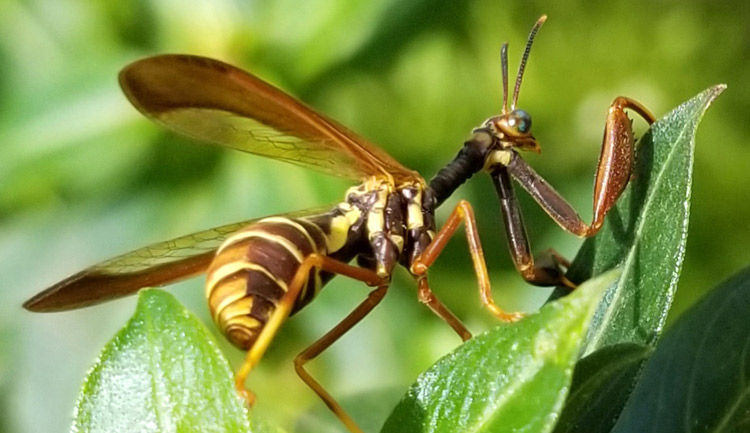
Mantisfly: Nature’s Master of Mimicry and Deception

In the intricate tapestry of the natural world, mimicry often plays a pivotal role in the survival of various species. One such remarkable example is the Mantisfly, a small and inconspicuous insect known for its remarkable ability to mimic the Yellow Jacket Wasp. In this article, we will delve into the fascinating world of the Mantisfly, exploring its mimicry skills, diet, and the intriguing encounters it has with its look-alike, the Yellow Jacket.
Mantisfly Mimicry: A Masterful Deception
The Mantisfly, scientifically classified as Mantispidae, belongs to the order Neuroptera. Its name itself is indicative of its deceptive nature, as it combines the appearance of a praying mantis and a wasp, creating a perfect ruse for its survival. These insects are typically small, measuring around 1 to 2 centimeters in length, and are often brightly colored, resembling the unmistakable yellow and black patterns of Yellow Jacket Wasps.
The mimicry of the Mantisfly serves multiple purposes in its survival strategy. Firstly, it deters potential predators who might mistake it for a stinging wasp and think twice before attempting to prey upon it. Secondly, it allows the Mantisfly to get close to its own prey, as other insects may mistake it for a predator and not a potential threat.
Diet: Carnivorous Predators
Mantisflies are carnivorous insects with a preference for soft-bodied prey. They primarily feed on a variety of insects, including flies, aphids, and caterpillars. Their hunting strategy involves stealthily approaching their prey and then rapidly seizing them with their specialized forelegs, which resemble the mantis’s raptorial appendages. Once captured, the prey is paralyzed and then consumed by the Mantisfly as it liquefies the victim’s innards and sucks them out.
Encounters with Yellow Jackets: Survival of the Deceptive
One of the most intriguing aspects of the Mantisfly’s life is its encounters with the Yellow Jacket Wasp, a creature it closely mimics. When a Mantisfly encounters a genuine Yellow Jacket, things can get quite interesting. Yellow Jackets are highly territorial and aggressive wasps, known for their painful stings and a fierce protective instinct over their nests.
The Mantisfly’s deceptive mimicry comes into play during these encounters. It relies on the assumption that the Yellow Jacket would recognize it as one of their own, and this often holds true. The Mantisfly may approach a Yellow Jacket nest or forage in close proximity, seemingly without arousing suspicion from the actual wasps.
However, this is not always a foolproof strategy. If a genuine Yellow Jacket becomes suspicious or detects a Mantisfly as an intruder, it may launch an attack. While the Mantisfly does have some defensive adaptations, including its agility and quick reflexes, it is not equipped with a stinger like the Yellow Jacket. Consequently, it must rely on its mimicry and evasive maneuvers to escape unscathed.
Conclusion
The Mantisfly’s ability to mimic the Yellow Jacket Wasp is a testament to the incredible ways in which nature has evolved to ensure survival. Through its mimicry, it navigates the complex web of predator-prey interactions and secures its place in the ecosystem. The Mantisfly is a living example of how deceptive appearances can be a powerful tool for survival, a lesson that continues to fascinate and inspire those who study the wonders of the natural world.



